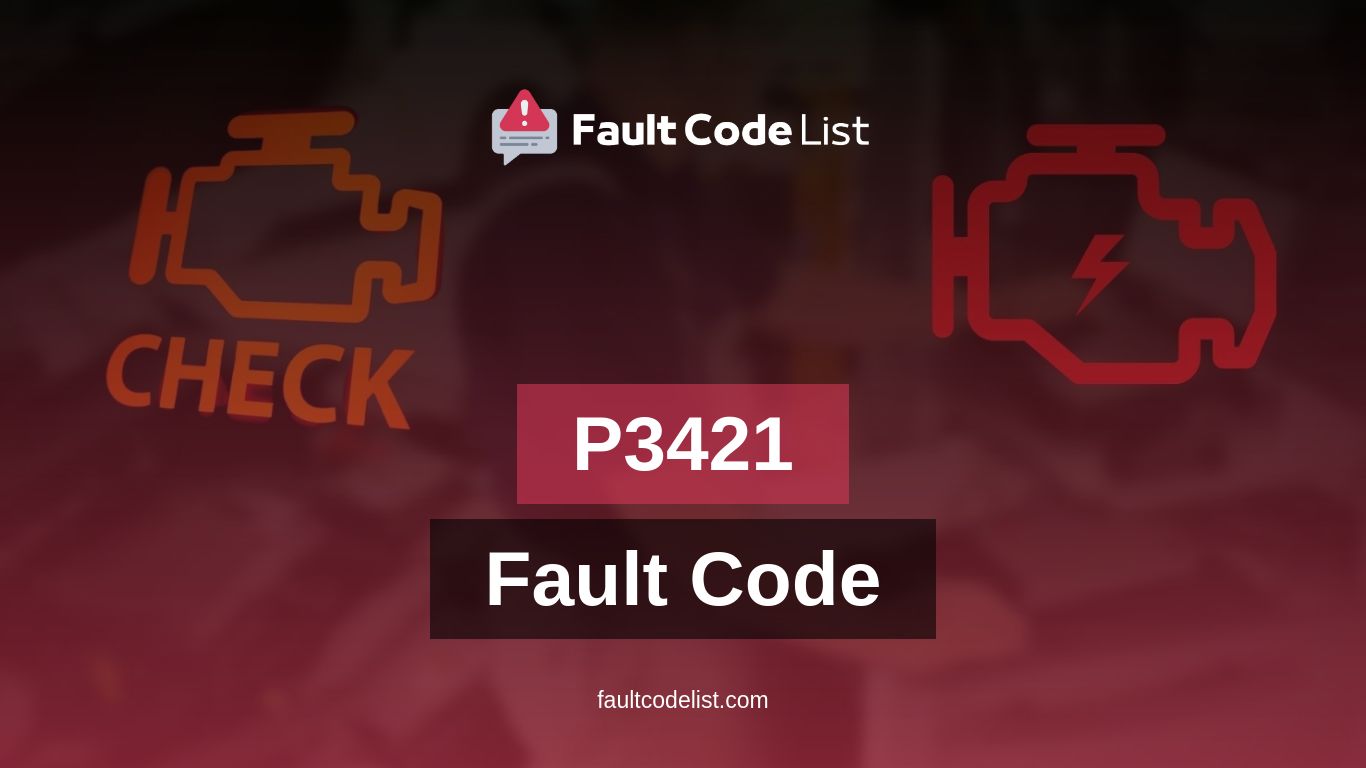Welcome to our comprehensive guide on the P3421 fault code in cars. If you’ve encountered this error code, we’re here to help you understand its meaning and provide potential solutions. The P3421 malfunction code is commonly associated with issues related to the vehicle’s powertrain.
Error codes, often indicated by a combination of letters and numbers, provide a window into your vehicle’s health. P3421, in particular, points to a concern with the exhaust valve control circuit of cylinder 3. In essence, this code indicates that the circuit responsible for controlling the exhaust valve in the third cylinder is experiencing an open circuit, meaning it’s not functioning as intended.

Reasons for P3421 Fault Code
When it comes to the P3421 fault code, there can be various reasons triggering it. The most common factors contributing to this error code include:
- Faulty Wiring: Damaged or corroded wiring can disrupt the electrical connection, causing an open circuit.
- Defective Exhaust Valve Control Solenoid: A malfunctioning solenoid can prevent the exhaust valve from opening or closing as needed.
- Poor Electrical Connections: Loose or poor-quality electrical connections can lead to an open circuit situation.
- Issues with the Engine Control Module (ECM): The ECM’s failure to send proper signals to the exhaust valve control circuit can result in an open circuit error.
Symptoms of P3421 Fault Code
Identifying the symptoms associated with the P3421 fault code can help diagnose the issue more accurately. Here are some common signs to watch out for:
- Check Engine Light (CEL) illuminated on the dashboard
- Engine misfires or runs rough
- Reduced fuel efficiency
- Stalling or difficulty in starting the vehicle
- Loss of engine power
Solution for P3421 Fault Code
Resolving the P3421 fault code requires appropriate troubleshooting and repair techniques. Depending on the underlying cause, here are some potential solutions:
- Inspect Wiring: Thoroughly examine the wiring connected to the exhaust valve control circuit. Look for any signs of damage, corrosion, or loose connections. Replace or repair damaged wiring as needed.
- Check Solenoid: Test the exhaust valve control solenoid to ensure it’s functioning correctly. If it’s defective, consider replacing it with a compatible and high-quality replacement.
- Evaluate ECM: If other components are in good condition, the issue might lie with the ECM. Diagnose the ECM’s functionality and consider reprogramming or replacing it if necessary.
- Professional Assistance: If you’re not comfortable with diagnosing or fixing the issue on your own, it’s advisable to seek the expertise of a qualified mechanic. They can perform in-depth diagnostics and implement the appropriate repairs.
The P3421 fault code in cars is indicative of powertrain-related issues that require attention. By understanding the potential causes, symptoms, and solutions discussed in this article, you can now take appropriate steps to diagnose and resolve the problem. Remember to consult a qualified mechanic or refer to your vehicle’s manual for accurate diagnostics and repairs.
